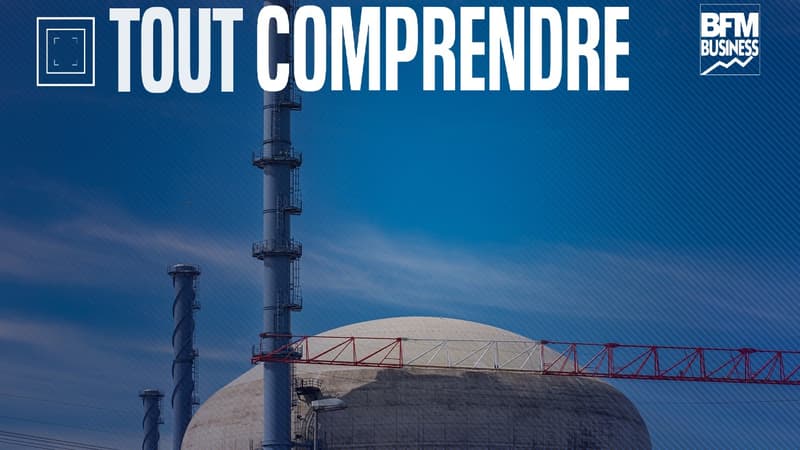New episode of what can be considered one of the biggest French industrial fiascoes. As EDF announced on Friday, the Flamanville EPR will be delayed for another six months before it enters service. Yet another episode that comes at a time when France intends to relaunch a nuclear program with the construction of 6 or even 14 additional EPRs to ensure its energy transition.
The commercial commissioning of the Flamanville EPR reactor, the first of this generation planned on French soil, is now announced for mid-2024. That is a total delay of 12 years compared to the initial planning. The additional semester will also mean an additional cost of 500 million euros, mainly related to the maintenance of personnel and subcontracted companies on site. This will bring the total amount of the Flamanville EPR, whose construction began in 2007, to 13.2 billion euros, EDF said, ie four times the initial budget of 3.3 billion euros.
Faced with the EDF’s stumbles, Henri Proglio, former head of the energy group, did not hesitate to affirm last week during his hearing in the National Assembly that the EPR was “a machine that is too complicated and almost unbuildable.”
• Why so much delay?
Since 2007, the site of the reactor, designed to offer greater power and safety, accumulates disappointments, be it anomalies in the steel of the lid and bottom of the vessel or welding problems. Again, the six-month delay is due to the necessary review of the treatment procedures for some 150 “complex” welds, within the main secondary circuit of the reactor, Flamanville 3 project manager Alain Morvan told reporters. .
The problem appeared this summer, when it was necessary to carry out the “stress relief” heat treatment of these welds: the process used revealed a “behaviour nonconformity” of nearby sensitive materials, affected by too high temperatures.
“We had a behavior of the temperatures of the valves not in accordance with what we expected”, explained Alain Morvan, from where the resumption of “studies to define a method (…) that allows to guarantee the good level of performance of these treatments thermal”. These modifications “have been submitted to Bureau Veritas, which analyzes them, and by the end of the year we will have the authorization to resume the so-called complex heat treatments,” said the project manager.
In addition to these technical risks, a shutdown of the reactor is already planned to change, at the end of 2024, the lid of its tank that presents anomalies, recalled Alain Morvan.
• Deeper causes?
The Flamanville industrial fiasco can also be explained by deeper fault lines. In 2020, a report by the Court of Auditors noted in particular the fierce competition that has faced EDF and Areva in recent years, when the former launched in Flamanville while the latter dealt with EPRs internationally. “This race between the two French companies led to the hasty launch of the construction works of the first two EPRs, on the basis of erroneous technical references and insufficient detailed studies,” the Wise Men wrote.
To this is added “the late awareness of the loss of technical capacity and quality culture of manufacturers in the sector”. An observation shared a year earlier by the report by Jean-Martin Folz, former CEO of PSA, who deplored “a general loss of skills”, considering that “considerable initial efforts to train and maintain” such skills, particularly in welding, “they must undertake to reconstitute a group of qualified professionals in this highly demanding discipline”.
• What are the consequences for the energy supply?
In the absence of the Flamanville EPR next year, France should once again face tensions over its electricity supply during the winter of 2023-24, while EDF already faces the aging of its nuclear fleet and the deployment of renewables, solar and wind, is fighting.
The start of the EPR will then only be gradual. If the fuel load for the 1st quarter of 2024 is now announced, the reactor will send its first electrons when it has reached almost 25% of its power, “about three months later”, so in mid-2024, before reaching 100% in 2025.
Under these conditions, RTE called on the public authorities to keep the Cordemais coal-fired power plant in service until the start-up of the EPR. As a reminder, the government had already made the decision to restart Saint-Avold’s at the beginning of December, closed in March, to ensure the country’s electricity supply.
Source: BFM TV


